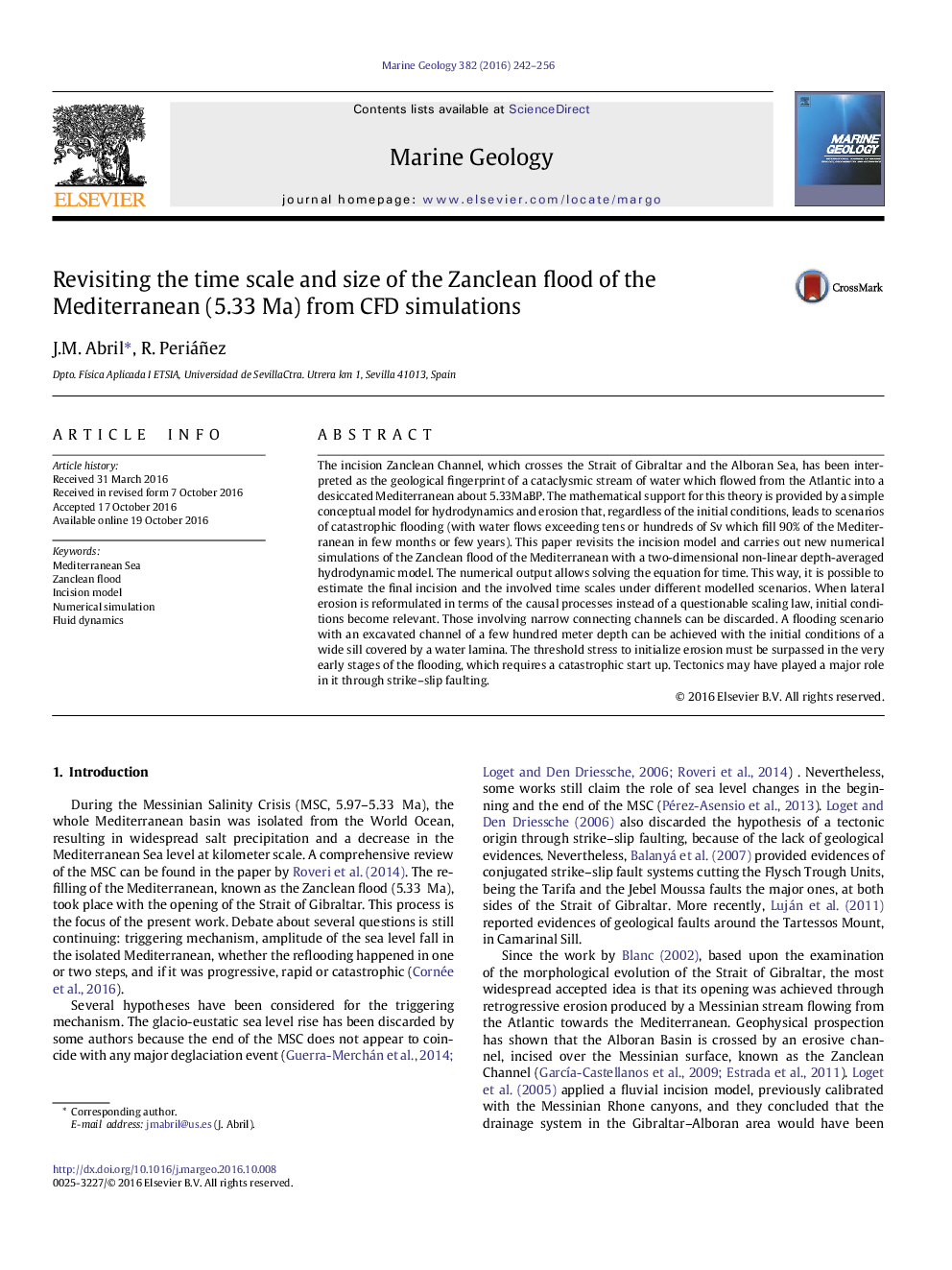| Article ID | Journal | Published Year | Pages | File Type |
|---|---|---|---|---|
| 8912113 | Marine Geology | 2016 | 15 Pages |
Abstract
The incision Zanclean Channel, which crosses the Strait of Gibraltar and the Alboran Sea, has been interpreted as the geological fingerprint of a cataclysmic stream of water which flowed from the Atlantic into a desiccated Mediterranean about 5.33MaBP. The mathematical support for this theory is provided by a simple conceptual model for hydrodynamics and erosion that, regardless of the initial conditions, leads to scenarios of catastrophic flooding (with water flows exceeding tens or hundreds of Sv which fill 90% of the Mediterranean in few months or few years). This paper revisits the incision model and carries out new numerical simulations of the Zanclean flood of the Mediterranean with a two-dimensional non-linear depth-averaged hydrodynamic model. The numerical output allows solving the equation for time. This way, it is possible to estimate the final incision and the involved time scales under different modelled scenarios. When lateral erosion is reformulated in terms of the causal processes instead of a questionable scaling law, initial conditions become relevant. Those involving narrow connecting channels can be discarded. A flooding scenario with an excavated channel of a few hundred meter depth can be achieved with the initial conditions of a wide sill covered by a water lamina. The threshold stress to initialize erosion must be surpassed in the very early stages of the flooding, which requires a catastrophic start up. Tectonics may have played a major role in it through strike-slip faulting.
Related Topics
Physical Sciences and Engineering
Earth and Planetary Sciences
Geochemistry and Petrology
Authors
J.M. Abril, R. Periáñez,
